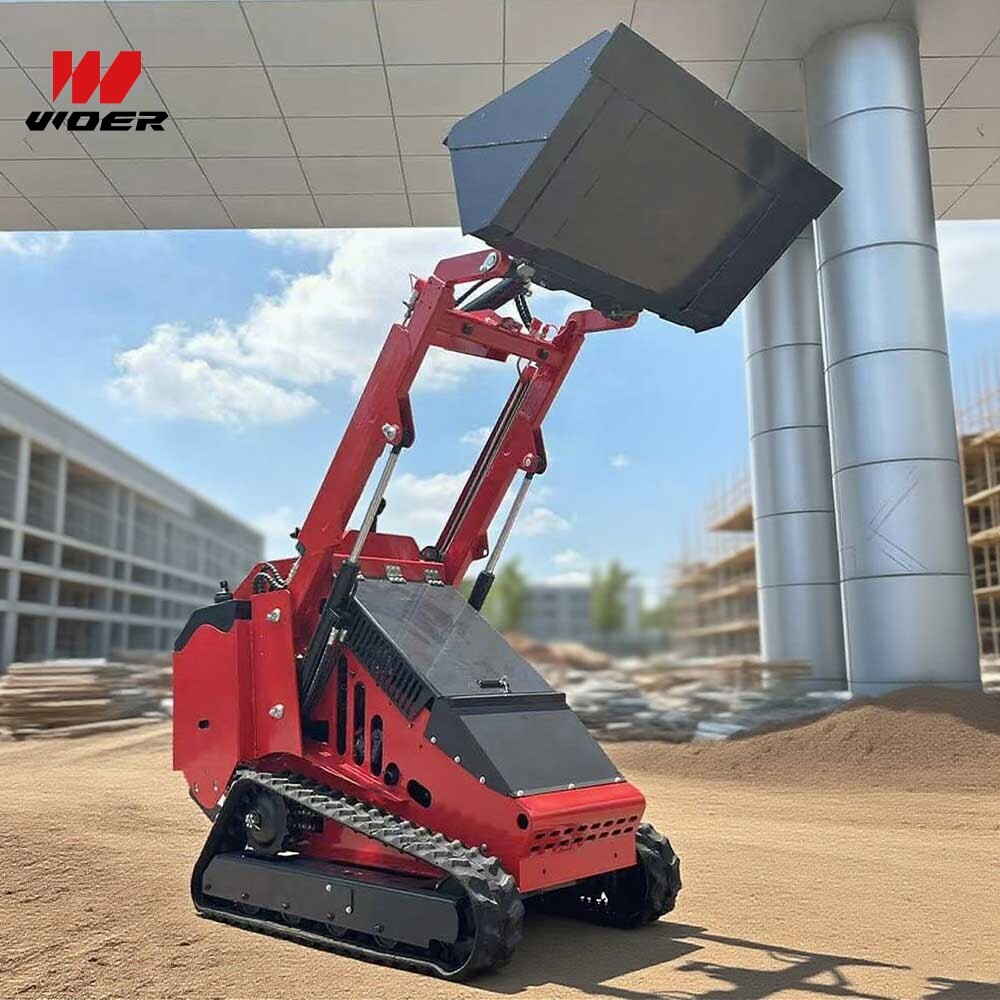Navigation
Contact us
Phone
Message

Regular, practical maintenance is the single most effective way to ensure a mini skid steer diesel crawler loader delivers reliable performance, low operating costs and safe operation. This guide provides actionable checks, schedules and troubleshooting tailored for owners, operators and procurement teams.
Why focused maintenance matters
Mini skid steer diesel crawler loader platforms — whether labeled stand on skid steer loader mini, mini walk behind skid steer loader, or mini steer skid loader — combine compact footprint with heavy-duty capabilities. Diesel engines, track undercarriage systems and hydraulic attachments require specific servicing to avoid costly downtime. For decision-makers, technicians and financial approvers the case is simple: preventive care reduces lifecycle cost, preserves resale value, and ensures compliance with emission rules such as those governed by EPA and regional equivalents.
Daily pre-shift checklist (quick wins)
- Visual inspection of tracks and rollers for cuts, wear or foreign objects that can derail a track.
- Check diesel fuel level and top up with clean fuel; use approved filters to prevent contamination.
- Verify hydraulic oil level, look for visible leaks, and inspect hoses for abrasions or kinks.
- Test controls, safety interlocks and operator presence systems — especially for stand-on and walk-behind configurations.
- Confirm lights, alarm systems and gauges operate correctly before entering a worksite.
Weekly and monthly service tasks
Develop a service log accessible to operators and supervisors. Weekly tasks should include filter checks, grease points and torque checks on fasteners. Monthly attention should be paid to fuel and hydraulic filters, battery terminals and track tension adjustments. Maintaining records preserves warranty eligibility and supports fleet audits.
Engine and fuel system care for diesel models
Diesel engines require clean fuel, correct oil viscosity and timely filter changes. Replace engine oil and fuel filters at manufacturer intervals or sooner under heavy-use conditions. Use fuel conditioners and drain water separators regularly to avoid microbial growth and water contamination that damage injectors. For machines operating in regulated jurisdictions, maintain emissions control components and documentation for track skid loader epa or epa skid steer loader audits.
Undercarriage and track maintenance
The undercarriage defines uptime for any mini crawler skid loaders. Follow a structured inspection and maintenance schedule:
Hydraulics and attachments
Hydraulic oil quality directly affects attachment response and system longevity. Use specified hydraulic fluids, change filters per hours, and bleed systems correctly after repairs. Keep attachment mounting points clean and check quick-couplers for wear. For wood-processing attachments or pallet forks used in timber operations, inspect pins and welds for fatigue.
Electrical systems and emissions compliance
Battery maintenance, secure connections and alternator performance are often overlooked. Corrosion on terminals causes voltage drops and intermittent faults. For machines that must meet emissions standards, maintain exhaust aftertreatment devices and documented service records. When procuring new units, look for models meeting regional standards and consider the long-term benefits of certified low-emission units.
Troubleshooting common faults
- Loss of power: Check fuel quality, air filter cleanliness and turbocharger intakes if fitted.
- Hydraulic drift or poor response: Inspect for air in the system, low oil level, or worn seals.
- Track de-tracking: Evaluate tension, inspect rollers for seizure, and check for damaged sprockets.
- Starting problems in cold weather: Use block heaters if available and ensure batteries are capacity-rated for low temperature.
Storage, transport and seasonal care
For off-season storage, drain or stabilize fuel, clean undercarriage thoroughly to prevent corrosion, and store in a covered dry area. When transporting, secure machine to avoid shock to tracks and hydraulic components. Documentation such as SOGs and transport checklists improves handovers between contractors and fleet managers.
Procurement, lifecycle cost and shipping
Purchasing decisions should weigh initial cost against maintenance burden and residual value. Compare models like skid steer loader crawler loader and mini crawler skid loaders for ease of access to service points, parts availability, and dealer support. Consider offers such as skid steer loader free shipping when evaluating total landed cost. For specialized timber workflows consider pairing loaders with optimized sawmill equipment such as Industrial Electric Diesel Wood Cutting Bandsaw Horizontal Sawmill to create efficient, integrated processing cells.
Standards, training and EEAT
Adopt applicable standards (ASTM or EN where relevant) for lifting, welding repairs and structural inspections. Provide documented operator training and certify technicians for hydraulic and diesel systems. Demonstrate Experience and Expertise by keeping service logs, repair histories and parts traceability. Trustworthiness increases when procurement teams can review field case studies and supplier references.
Final recommendations and call to action
Implement a tiered maintenance program: daily operator checks, weekly preventative tasks, and quarterly technical inspections. Prioritize fuel and hydraulic cleanliness, undercarriage care, and emission compliance. For fleet buyers and technical evaluators, request maintenance access features and a clear spare parts roadmap before purchase. Operators will benefit from concise checklists and hands-on training to reduce human error and prolong equipment life.
Why choose our solutions and next steps
We combine field-tested maintenance protocols with supplier support to lower total cost of ownership and maximize machine availability. Contact our sales and service team to receive a tailored maintenance schedule, operator training package, and a transparent quote that includes shipping options. Request a consultation and equipment checklist to start optimizing uptime today.

This stunning beach house property is a true oasis, nestled in a serene coastal community with direct access to the beach.
Contact
West Street, Melbourne Victoria 3000 Australia